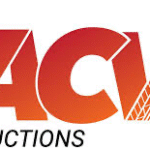Company Overview
Copart, Inc. (NASDAQ: CPRT) is a global provider of online vehicle auction and remarketing services. Founded in 1982 and headquartered in Dallas, Texas, the company facilitates the sale of vehicles—primarily through online auctions—to dealers, dismantlers, rebuilders, and public buyers. Its inventory includes cars sourced from insurance companies, banks, charities, fleet operators, dealers, and individual sellers. Copart pioneered the move to 100% online auctions and leverages proprietary VB3 auction technology to enhance buyer participation. The company operates in over 200 locations across 11 countries.

Recent Earnings – Q3 FY2024 (Reported May 16, 2024)
Copart reported Q3 FY2024 results that exceeded analyst expectations. Earnings per share (EPS) came in at $0.45, beating the consensus estimate of $0.43. Revenue reached $1.14 billion, up 10.3% year-over-year, compared to the expected $1.10 billion. Growth was driven by higher service revenues and a strong volume of vehicles sold, particularly from insurance and fleet partners. The company did not provide formal forward guidance, but management noted sustained strength in salvage vehicle supply and international expansion opportunities.
Founding, Growth, and Business Model
Copart was founded in 1982 by Willis J. Johnson in Vallejo, California. Initially focused on traditional vehicle salvage auctions, the company transitioned to online-only auctions by 2003, becoming a digital-first remarketing leader. Its key innovation, the VB3 auction platform, allows for real-time bidding from global buyers. Copart went public in 1994 and has steadily expanded through organic growth and acquisitions, including global expansion in the UK, Germany, Brazil, and the Middle East.
The company primarily earns fees from sellers and buyers during each vehicle transaction. These fees include auction, storage, and title processing services. In addition to salvage vehicles, Copart also auctions off clean title vehicles and non-repairables, broadening its revenue base.
Its key competitors include IAA (now part of RB Global), KAR Global (OPENLANE), and regional auction platforms. Despite growing competition, Copart’s vertical integration and scale give it significant operating leverage.
Industry Landscape and Market Dynamics
Copart operates in the auto remarketing and salvage auction market—a niche yet highly profitable segment of the broader used car ecosystem. The total addressable market includes salvage vehicles from insurance carriers, non-repairable and end-of-life vehicles, and vehicles from fleet owners and car rental firms. Insurance companies alone provide over 40% of Copart’s vehicle volume.
According to market research, the global salvage vehicle market is projected to grow at a CAGR of 5–6% through 2030, driven by rising vehicle density, increased accident rates, and growing awareness of online auction platforms. Additionally, Copart is well-positioned to benefit from electrification trends, as EVs have higher total loss rates, and from climate-related events that increase vehicle damage claims.
Competitive Landscape
Key competitors include:
- RB Global (IAA) – A close peer, especially post-merger with Ritchie Bros, IAA is Copart’s largest rival in the salvage auction business.
- KAR Global (OPENLANE) – More focused on wholesale remarketing of dealer inventory but still overlaps in some segments.
- Insurance and OEM Direct Sales Platforms – Some insurance companies are experimenting with direct sales platforms, although these lack Copart’s scale and global buyer base.
While these competitors pose challenges, Copart’s integrated logistics, title processing, and digital infrastructure offer clear moats.
Differentiation and Moat
Copart’s key differentiators include:
- Proprietary VB3 Technology: A real-time online auction system that enables dynamic global bidding, increasing liquidity and price discovery.
- Logistics and Storage Infrastructure: Over 200 physical locations globally, allowing Copart to store and transport large volumes of vehicles efficiently.
- Long-Term Contracts with Insurance Firms: Deep relationships and preferred vendor status make it difficult for competitors to displace Copart.
- Data Advantage: Years of historical sales and pricing data feed into AI-based pricing tools, improving vehicle valuation and auction performance.

Management Overview
- Jay Adair (CEO): Joined Copart in 1989, became CEO in 2010. He is credited with leading Copart’s digital transformation and international expansion.
- Jeff Liaw (President and Co-CEO): Joined in 2016 and has helped scale global operations and expand analytics capabilities. Known for disciplined capital allocation.
- Matt Blunt (Board Member): Former Governor of Missouri and influential figure in regulatory and public affairs; supports Copart’s international and legislative strategies.
5-Year Financial Performance
Copart has delivered consistent financial outperformance over the past five years. Revenue has grown from approximately $2.0 billion in FY2019 to $4.3 billion in FY2023, representing a CAGR of ~15%. This growth is fueled by higher vehicle volumes, price appreciation in salvage markets, and expansion into new geographies.
Earnings have grown even faster, with net income rising from $700 million in FY2019 to over $1.8 billion in FY2023, a CAGR of ~21%, supported by operating leverage and margin expansion. Gross margins regularly exceed 45%, among the best in the auction and logistics industries.
The balance sheet remains fortress-like, with zero long-term debt and over $2 billion in cash, enabling flexibility for M&A, site expansion, and technology investment. Return on equity and free cash flow generation are consistently strong.
Bull Case for Copart
- Structural growth in salvage vehicles driven by increasing total loss rates and climate-related damage.
- Expansion into emerging markets such as India and the Middle East offers new revenue streams.
- Superior technology and infrastructure create high switching costs and customer loyalty.
Bear Case for Copart
- Recessionary risks could reduce vehicle miles driven and accident rates, thereby lowering salvage volumes.
- Increased insurance company disintermediation could pressure fees and volume.
- EV complexities may require costly changes in vehicle handling, reducing margin efficiency.
Analyst Reactions to Earnings
Following Copart’s Q3 FY2024 earnings beat, several analysts raised their price targets.
- JP Morgan reiterated “Overweight” and raised the target from $55 to $60.
- Goldman Sachs maintained a “Neutral” rating but acknowledged improved service revenue trends.
- Raymond James upgraded the stock from “Market Perform” to “Outperform” citing international growth momentum and strong margin performance.

The stock is in a stage 4 decline on all 3 time frame, so the support at $41 – $44 would be the key area for a pivot.

